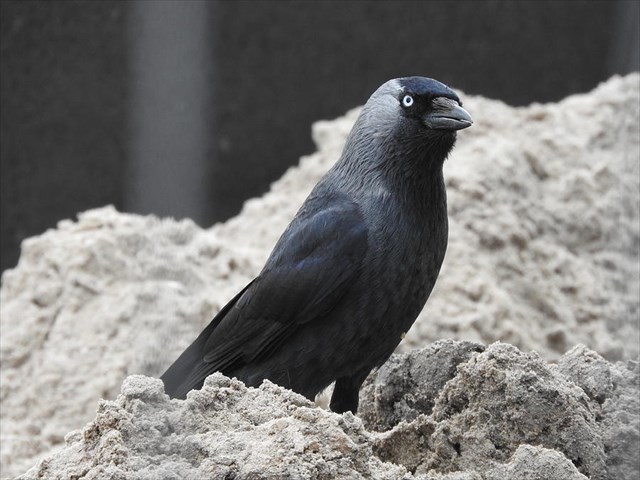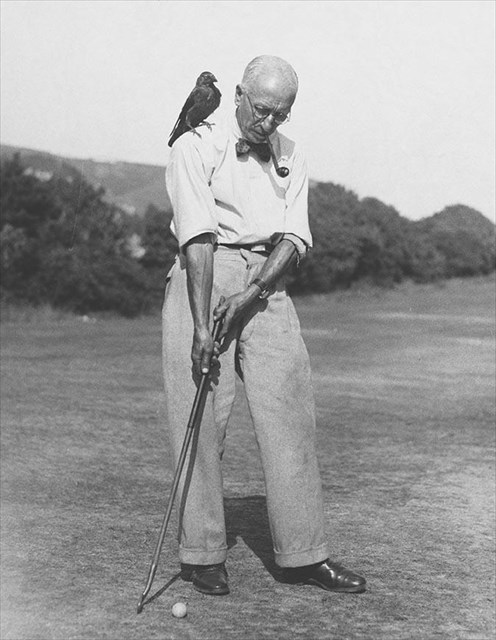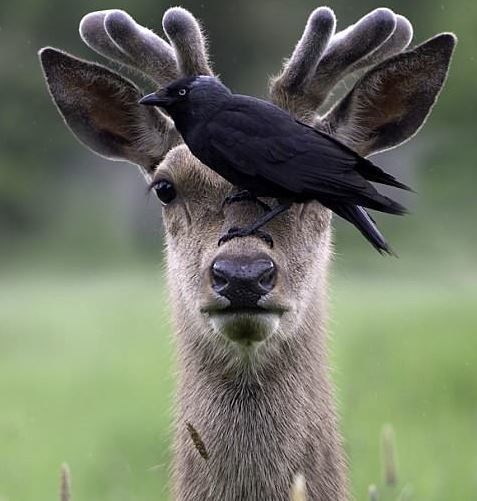Ilkley North West Trail #12: Jackdaw - Cleverest Crow?

This is the 12th of a 13-cache series which takes you on a 4.3km trail around some of the lovely countryside between Middleton and Austby immediately to the northwest of Ilkley above the north bank of the Wharfe. Allowing for an easy pace, stopping for caches | to admire the view | spot birds the trail should take you about 3 hours or so.
See GC8Q381 Ilkley NorthWest Trail #1: Intro & Start for background info on the trail and parking waypoints. See Gallery for a map of the trail showing parking spots and approximate cache locations.
The cache, a small camo-taped sample tube is hidden in a tree on the south side of Harding's Lane adjacent to a fine old property called The Hollies shown on most maps (old and current) of the area.

To reach the cache location:
If following the series sequence: from #11 head east along Harding's Lane past the entrance of The Hollies to the roadside cache location.
If doing as a one-off: park @ P3 adjacent to the location of #11 and proceed as above.
After placing the cache, as I was taking some photos of the great view across the Wharfe Valley from the nearby Public Footpath gate and observed a 'clattering' or 'train' of these birds calling to each other (listen here) as they foraged in the large grassy field leading down to the western edge of Middleton Woods.
 The (western, Eurasian, European) jackdaw (Corvus or Coloeus monedula), also known as the Ninja Bird, is a passerine bird in the crow family. Found across Europe, western Asia and North Africa, it is mostly resident, although northern and eastern populations migrate south in winter. There are 4 subspecies which differ in the colouration of the plumage on the head and nape. The one found in UK is C. m. spermologus from the Greek σπερμολόγος, a picker of seeds. Its common name is from jack (small) and daw, a less common synonym for 'jackdaw', and the archaic native English name for the bird.
The (western, Eurasian, European) jackdaw (Corvus or Coloeus monedula), also known as the Ninja Bird, is a passerine bird in the crow family. Found across Europe, western Asia and North Africa, it is mostly resident, although northern and eastern populations migrate south in winter. There are 4 subspecies which differ in the colouration of the plumage on the head and nape. The one found in UK is C. m. spermologus from the Greek σπερμολόγος, a picker of seeds. Its common name is from jack (small) and daw, a less common synonym for 'jackdaw', and the archaic native English name for the bird.
Here are some QI facts about this familiar bird - but one of the world's smartest!
1. Intelligence: these small crows are highly intelligent and social, and easily pick up tricks and new skills in  the wild as well as in captivity. Once a tame jackdaw was trained by some Italian thieves to steal money from cash machines but it’s more common to see them working out how to gain access to bird feeders!
the wild as well as in captivity. Once a tame jackdaw was trained by some Italian thieves to steal money from cash machines but it’s more common to see them working out how to gain access to bird feeders!
They can even identify individual humans, although it is not yet certain how they do it. Only a few animals are capable of this, including other corvids like crows and magpies, as well as chimpanzees and pigeons.
2. ID: they are the smallest member of the crow family (collectively known as corvids), which also includes ravens, crows, rooks, jays and magpies.
Like most corvids, they are as much at home in farmland and woodland, as in urban settings - thanks to their adaptability and intelligence.
They can be quickly identified by their light grey nape and pale white iris, which stand out against the black plumage. Juveniles, however, lack the grey nape and are born with blue-grey eyes. Their irises change to brown in the first winter and white once they gain their adult plumage. The call is a simple ‘jack-jack’ (listen here)
Carrion crows are significantly bigger, black all over, and have brown irises. Crows are also often found alone or in pairs, whereas jackdaws are more gregarious and they usually live and move around in groups.
 3. Home: they are colonial cavity nesters, and will use anything from a hole in a tree to a chimney. Nests are usually constructed with sticks and lined with wool or hair. Eggs are pale blue or blue-green and generally covered with darker speckles. The clutch is normally 4-5 eggs, but they all hatch at different times, which means the youngest chick has a significantly lower chance of survival than the eldest.
3. Home: they are colonial cavity nesters, and will use anything from a hole in a tree to a chimney. Nests are usually constructed with sticks and lined with wool or hair. Eggs are pale blue or blue-green and generally covered with darker speckles. The clutch is normally 4-5 eggs, but they all hatch at different times, which means the youngest chick has a significantly lower chance of survival than the eldest.
4. Mates for life: they form strong pair bonds with their mates and are renowned for their devotion towards their partner. Even if they suffer from a few years of unsuccessful breeding, they still stay together, potentially due to the fact that they have invested so much time and energy into trying to raise young together.
5. Going grey: some birds start going grey in old age, but it may not be noticeable because the greying is caused by changes to feather structure (so light is reflected differently) rather than by lack of pigment like in humans. Greying is more obvious in jackdaws than most other bird species because they’ve got mostly black plumage.
6. Friendly bunch: as well as breeding in colonies, they also roost and feed together. If one finds a really  good supply of food, it will regularly come back to the same area, sometimes encouraging other jackdaws to ‘tag’ along. They are often also seen feeding alongside rooks and carrion crows.
good supply of food, it will regularly come back to the same area, sometimes encouraging other jackdaws to ‘tag’ along. They are often also seen feeding alongside rooks and carrion crows.
7. Meal-time: they are omnivores with a diet consists mostly of seeds, fruit and invertebrates, but as they also eat carrion, they will pick at road kill or even take other birds’ eggs. Their diet varies depending on their location, so near farms insects are important, but in urban and woodland areas seeds and fruit make up more of the diet.
See here for more detailed info on this clever corvid.